Gulf Craft Building New Ferry for US Virgin Islands

Franklin, La. shipbuilder Gulf Craft LLC in November kicked off construction on new Incat Crowther-designed passenger ferry for the U.S Virgin Islands.The new USCG Subchapter-K approved, 104-foot (32-metre) vessel will service the busy tourist and commuter route between Red Hook on the island of St. Thomas, and Cruz Bay on the island of St. John. Currently, two other Incat Crowther-designed 28-metre vessels service this route.The simple yet stylish new ferry will be designed with…
Pacific Green Names Helland-Evebo as VP
Pacific Green Technologies, the developer of emission control technologies that remove pollutants from marine engine, announced the appointment of Frode Helland-Evebo as Vice President, Marine Direct Sales, a new position at the Company, effective September 1, 2019.The owner of the ENVI-Marine and ENVI-Clean Exhaust Gas Scrubbing Systems said in a press release that Frode is a sales professional with 24 years’ experience in roles with leading Scandinavian and international corporations, including Autronica (a subsidiary of United Technologies Corporation), Honeywell, Consilium and Zenitel.Frode joins from the international exhaust gas scrubbing business…
ClassNK Approves Niigata Dual-fuel Engine Design
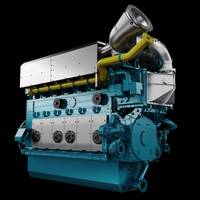
Classification society ClassNK has granted approval to the design of the new 28AHX-DF dual-fuel engine developed by Niigata Power Systems Co., Ltd. The new engine is slated to be used as the main engine on a new LNG-fuelled tugboat being built by Keihin Dock Co., Ltd. for NYK Line. The vessel will be Japan’s first LNG fuelled vessel, excluding LNG carriers. New regulations for Emission Control Areas (ECA), including new stricter limits on sulfur emissions as well as the IMO’s Tier III NOx emission limits, are driving demand for new engine and emission control technologies.
Classification Leaders Weigh in on Marine Propulsion

When talk turns to marine propulsion and the host of surrounding topics – emissions, efficiency, fuel consumption – we turn to class for answers. While there are just two questions, the ensuing answers from leaders at ABS, BV, ClassNK, DNV GL, LR and RINA are voluminous & enlightening. The stricter environmental regulations and rising fuel costs lead to technology development in design, size, propulsion and operations. This goes well beyond LNG as fuel, and we believe we will see a more diversified mix, with batteries, hybrids, methanol and so on.
A Closer Look inside the Alfa Laval Test & Training Center

Just two months remain until the inauguration of the Alfa Laval Test & Training Center on January 15, 2014. Originally conceived for the development of PureSOX and other emission control technologies, it has grown to incorporate far more than just exhaust systems. Now that the majority of the equipment is in place, it is possible to take a deeper look into the details of this remarkable new facility. Located on the site of the former Aalborg Shipyard in Aalborg, Denmark, the new Alfa Laval Test & Training Center is an imposing structure.
EPA Tier 4 Emission Regulations
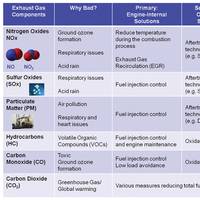
Implications on U.S. The next round of emission regulations will bring significant impacts to the design, construction, and operation of U.S. commercial and government vessels starting in 2014. The impending EPA Tier 4 regulations directly apply to high and medium-speed diesel engines used in workboats, ferries, small cargo ships, and government vessels. These regulations represent the most significant reduction of marine emission levels to date, specifically in the form of nitrogen oxides (NOx). Natural gas fueled engines present one path to compliance, but not the only path.
Onboard Testing Services Emerge
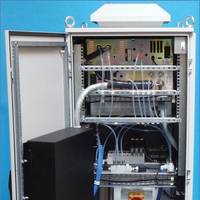
As increasingly strict government and international maritime regulations are phased in to reduce harmful emissions produced by workboats and tugs, the need for onboard, in-use testing services capable of delivering accurate, continuous emissions data needed has also come about. Monitoring emissions such as NOx, SO2 and particulate matter is fast becoming not just the right thing to do; it will soon become a requirement, as well. Although much work has been done to clean up ports and marine terminals…
Automated Systems Simplify Regulatory Compliance
Tough new air pollution regulations for the maritime industry are making it difficult for the shipping industry to comply. The International Maritime Organization (IMO), the U.S Environmental Protection Agency (EPA) and the California Air Resources Board (CARB), to name a fe.w, have introduced new regulations to regulate air pollution. Steep fines and delays face maritime operators that do not comply with engine emissions monitoring and reporting. This is a challenge for shipping companies on several levels. First, despite being similar in some respects, the regulations often have different requirements, operating parameters and deadlines. Second, until recently the continuous, onboard emissions testing equipment and services required to monitor emissions have not existed.
On-Board Testing Services Emerge
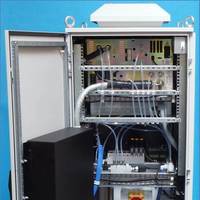
Testing delivers data needed to clean up tugs and workboats. As increasingly strict government and international maritime regulations are phased in to reduce harmful emissions produced by workboats and tugs, the need for on board, in-use testing services capable of delivering accurate, continuous emissions data needed has also come about. Monitoring emissions such as NOx, SO2 and particulate matter is fast becoming not just the right thing to do; it will soon become a requirement, as well.
New Fuels, New Rules & New Tools
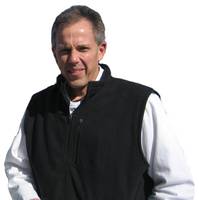
Helping the Maritime Community adapt to strict emission regulations. What has changed during 2012 in the maritime world and how has it impacted industry? It is recent IMO Marine Environment Protection Committee (MEPC), changes. IMO has adopted amendments to the International Convention for the Prevention of Pollution from Ships (MARPOL). These changes will have a vast and fundamental impact on the maritime industry and the world over the next few years. With new IMO regulations pertaining to emission control areas…
Air Emission Regulation Update

In March this year, The U.S. Environmental Protection Agency proposal to designate waters off the North American coasts as an Emission Control Area was adopted by IMO, the International Maritime Organization. The North American ECA is a key part of a comprehensive EPA program to address harmful emissions from large ships. Which are the time schedules of upcoming emission regulations? How are marine engine manufacturers preparing for the tighter air emission limits being adopted? Henrik Segercrantz explores.
North American Coasts, Emission Control Area
The International Maritime Organization (IMO) officially accepted the proposal to designate waters off the North American coasts as an Emission Control Area (ECA) – a move that will result in cleaner air for millions of Americans. Large ships that operate in ECAs must use dramatically cleaner fuel and technology, leading to major air quality and public health benefits that extend hundreds of miles inland. The ECA was proposed in March 2009 and the IMO adopted it in the fastest possible timetable. “This is a change that will benefit millions of people and set in motion new innovations for the shipping industry. We’re gratified by the IMO’s decision to help keep our air clean and our communities healthy,” said EPA Administrator Lisa P. Jackson.
Wärtsilä: Smokeless by Common Rail
There are two main ingredients to common rail fuel injection, one being the freedom to choose injection pressure and timing totally independently of the engine load. The other is computerized control, which makes it possible to consider several engine parameters and optimize the injection and combustion in each load situation. The Wärtsilä Common Rail development was kicked off for both medium-speed engines and low-speed engines at a seminar in June 1997. This year both medium-speed engines and low-speed engines will enter commercial service. The Wärtsilä Common Rail concept for four-stroke engines comprises: Camshaft driven high-pressure pumps…






